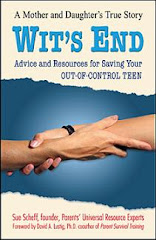Even Children Can Be Bipolar
By Adam Wilkenfield
CWK Network
Twelve-year-old Andrew is ‘bipolar.’
For him, when life is good, it’s incredibly good. And a bit out of control. But when it’s bad, it’s rotten, and he gets profoundly depressed.
It’s the same disorder that used to be known as ‘manic-depression.’
Now researchers from Washington University in St. Louis report it can be identified in children as young as age seven. And they say, when it exists in children, bipolar can take on a form that’s even more severe than in most adults.
“So one minute they are angry and yelling and screaming and grandiose and they’re in charge of the world and an hour later they are threatening suicide. And this is what drives parents up the wall because, how do you deal with this?” says Dr. Steven Jaffe, a child and adolescent psychiatrist.
“I just get really mad and start cussing and screaming and hitting people, and destroying other people’s property, destroying my property ,” Andrew tries to explain. “I don’t like being in the cycle but I can’t help it.”
Dr. Jaffe says the first thing for parents to do is recognize that bipolar disorder is a medical problem, and not their fault. “This is not due to parental inadequacy…It is a genetic disease,” he says.
Next, he says, parents should look into getting help from the outside. With psychiatric treatment and medication, Andrew is slowly getting his life under control.
Bipolar Disorder Often More Severe in Children
By Sally Atwood
CWK Network
Researchers from Washington University School of Medicine in St. Louis report that bipolar disorder can occur in children as young as 7 years old and that it can resemble a severe form of bipolar disorder in adults.
Bipolar disorder, formerly called manic-depressive illness, is a serious mental illness characterized by recurrent episodes of depression, mania, and/or mixed states.
Adults and children with bipolar disorder experience unusual and extreme shifts in mood, energy and behavior that interferes with their ability to perform the normal activities of daily living.
Adults will generally have relatively normal functioning between bouts of mania or depression.
Children, on the other hand, have a more severe, chronic course of the illness. According to the study, many children with the illness will have mania and depression at the same time, will often stay ill for years without intervening well periods, and will frequently have multiple daily cycles of high and low.
What Parents Need To Know
Manic symptoms include:
Elated mood
Grandiosity
Flight of ideas—jumping illogically from topic to topic
Racing thoughts
Decreased need for sleep
Distractibility
Depressive symptoms include:
Persistent sad or irritable mood
Loss of interest in activities once enjoyed
Difficulty in sleeping or oversleeping
Loss of energy
Feelings or worthlessness
Difficulty concentrating
Physical agitation or slowing
Recurrent thoughts of death or suicide
Some of these symptoms can indicate other psychiatric disorders in children, such as conduct disorder (CD), oppositional-defiant disorder (ODD), obsessive-compulsive disorder (OCD) and attention-deficit-hyperactivity disorder (ADHD).
Effective treatment of bipolar disorder in children hinges on correct diagnosis.
The Washington University study points out the confusion that can arise between mania and ADHD. Both have hyperactivity, irritability and distractibility as symptoms. However, treatment for the two disorders is different.
The Child and Adolescent Bipolar Foundation (CABF) says that parents can aide their child’s mental health professional in making a correct diagnosis by keeping daily notes of the child’s mood, behavior, sleep patterns, unusual events, and statements by the child.
Once a diagnosis of bipolar disorder has been made, treatment may include medication to stabilize mood, close monitoring of symptoms, education about the illness, counseling or psychotherapy for the individual and family, good nutrition, regular sleep and exercise, and participation in a network of support.
Resources
Child and Adolescent Bipolar Foundation http://www.bpkids.org/
National Institute of Mental Health http://www.nimh.nih.gov/
Washington University School of Medicine medinfo.wustl.edu
Sunday, July 29, 2007
Subscribe to:
Posts (Atom)




